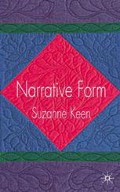Abstract
‘Narrative form,’ the subject of the preceding chapters, often means something entirely different from the tools and techniques described in most of this text. To the question ‘What form is this narrative?’ an interlocutor may expect an answer that names a genre. It is an epic in twelve books. It is a mystery novel, with a gathering of characters in an English country house, one of whom will be revealed to be the murderer. It begins as a psychological thriller and halfway through turns into a farce. It is a space opera. It is the third and climactic part of a fantasy trilogy. These forms (or kinds, types, or subgenres) have often been left out of theoretical discussion of narrative form, as the undignified sub-literary cousins of ‘serious fiction’ which obey no formulas, as the irrelevant impingements of ancient traditions on up-to-date narratives, or as the too-contingent categories that confute the premise of structuralist ahistoricity.1 The rejection of the idea of genre often implies that genre impedes originality, that it imposes form onto an artist’s ideas, and that it is the enemy of innovation. Yet as Claudio Guillén observes, genre is but an ‘invitation’ to combine matter and form in ways that resemble previously achieved combinations (Literature as System, 109). Neither a strict recipe nor an exclusionary tradition, genre can thus be seen as Guillén recommends, as a problem-solving model, whose usefulness is demonstrated when real writers match matter and form (Literature as System, 110–11).
Access this chapter
Tax calculation will be finalised at checkout
Purchases are for personal use only
Preview
Unable to display preview. Download preview PDF.
References
Bakhtin, Mikhail, ‘Forms of Time and of the Chronotope in the Novel,’ in The Dialogic Imagination: Four Essays by M. M. Bakhtin, ed. Michael Holquist, trans. Caryl Emerson and Michael Holquist (University of Texas Press, 1981).
Burke, Kenneth, Counter-Statement, 2nd ed. (Hermes Publications, 1953). See ‘Lexicon Rhetoricae,’ 123–83.
—— The Philosophy of Literary Form: Studies in Symbolic Action, 2nd ed. (Louisiana State University Press, 1967). See the title essay, 1–137.
Colie, Rosalie, The Resources of Kind: Genre-Theory in the Renaissance, ed. Barbara Kiefer Lewalski (University of California Press, 1973).
Derrida, Jacques, ‘The Law of Genre,’ trans. Avitall Ronell, in On Narrative, ed. W. J. T. Mitchell (University of Chicago Press, 1981), 51–77. A playful look at the madness of the law of genre, particularly the ‘law’ that says ‘genres are not to be mixed.’
Dubrow, Heather, Genre: The Critical Idiom (Methuen, 1982). This provides a very concise run-down of genre theory.
Fishelov, David, Metaphors of Genre: The Role of Analogies in Genre Theory (Penn State University Press, 1993). Fishelov makes a compelling case for a pluralistic approach to genre, in which no one conceptual framework (implicit in analogies for genre) overrides the potential usefulness of the others.
Fowler, Alastair, Kinds of Literature: An Introduction to the Theory of Genres and Modes (Harvard, 1982). Renaissance focus; very useful.
Frye, Northrop, Anatomy of Criticism: Four Essays (Princeton University Press, 1957). The first and fourth essays are the most relevant, though parts of the third essay also contribute to our understanding of Frye’s conception of genre.
Genette, Gérard, The Architext: An Introduction, 1979, trans. Jane E. Lewin (University of California Press, 1992).
Goldman, Michael, On Drama: Boundaries of Genre, Borders of Self (University of Michigan Press, 2000).
Guillén, Claudio, Literature as System: Essays toward the Theory of Literary History (Princeton University Press, 1971). See especially essays 4 and 5, ‘On the Uses of Literary Genre’ and ‘Genre and Countergenre,’ 105–58.
Hernadi, Paul, Beyond Genre: New Directions in Literary Classification (Cornell University Press, 1972).
Hirsch, E. D., Validity in Interpretation (Yale University Press, 1967). See especially chapter 3, ‘The Concept of Genre,’ 68–126.
McKeon, Michael (ed.), Theory of the Novel: A Historical Approach (Johns Hopkins University Press, 2000). See especially 1–69 for a selection of readings from genre theory.
Moretti, Franco, ‘Graphs,’ a lecture (Sept. 2002). Forthcoming (2003) in New Left Review.
Morson, Gary Saul, The Boundaries of Genre: Dostoevsky’s Diary of a Writer and the Traditions of Literary Utopia (University of Texas Press, 1981).
Rabinowitz, Peter J., Before Reading: Narrative Conventions and the Politics of Interpretation (1987), 2nd ed., foreword by James Phelan (Ohio State University Press, 1998).
Todorov, Tzvetan, Genres in Discourse, trans. Catherine Porter (Cambridge University Press, 1990).
Urban, Greg, Metaculture: How Culture Moves through the World (University of Minnesota Press, 2001).
Author information
Authors and Affiliations
Copyright information
© 2003 Suzanne Keen
About this chapter
Cite this chapter
Keen, S. (2003). Genres and Conventions. In: Narrative Form. Palgrave Macmillan, London. https://doi.org/10.1057/9780230503489_11
Download citation
DOI: https://doi.org/10.1057/9780230503489_11
Publisher Name: Palgrave Macmillan, London
Print ISBN: 978-0-333-96097-4
Online ISBN: 978-0-230-50348-9
eBook Packages: Palgrave Literature & Performing Arts CollectionLiterature, Cultural and Media Studies (R0)

